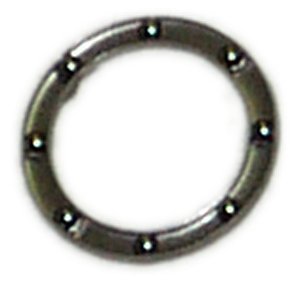|
|
Adjusting Device
Assignment
The development of the integrated handbrake for the sliding-caliper brake took longer than the development of the sliding-caliper brake itself. This is mainly due to the complicated automatic adjusting device.
Function
In the picture above one can see from right to left first a part of the grey brake disc, then the light grey brake pedal with a black steel plate, and third the piston, surrounded by the cylinder (both in green). If the handbrake is operational, it works through the grey pin on the blue cylinder with thread. Assuming relatively new brake pads, the screw is deeply screwed into the thread with vertical
clearance.
Please notice that the handbrake can be operated normally. If the brake pad gets worn, the foot brake will adjust the handbrake simultaneously. If you try yourself (by clicking), you will notice that the
screw shifts itself after a short distance on the threat of the blue cylinder. In reality the screw does not have a hexagonal head. To make the construction less eligible for friction, there is a keyed washer with ball
bearings beneath the screw head.
If the brake pad should be exchanged, the piston has to be screwed back to its initial position. If there is no integrated handbrake, the piston can be pressed into its initial
position.
The readjustment for the handbrake also explains why, when changing brake pads, the pistons with handbrake can be turned back and the without handbrake can be pushed back.

To keep the automatic readjustment as
smooth as possible, a washer with ball bearing is arranged between the screw head and the piston.
|
|